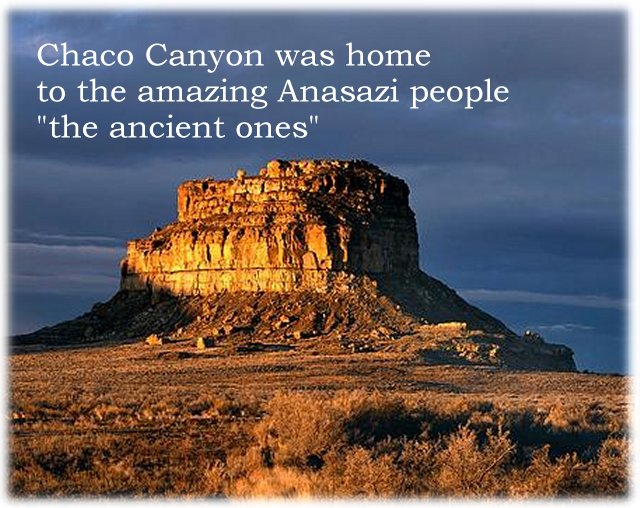MessageToEagle.com – Many theories have been presented, but there is still no definite answer to why the Anasazi decided to abandon their great cities.
In south-west America, there are remains of the dwellings that once belonged to the Anasazi people, a civilization that arose as early as 1500 BC.
The first settlement was found at Mesa Verde by Richard Wetherill, a rancher and trader who, in 1888–1889, was the first Anglo-American to explore the sites in that area.
Surprisingly, everything there was found so well preserved in the dry conditions that it really looked as if the inhabitants had just fled.
The numerous human remains included some desiccated bodies indicating that some kind of massacre had taken place at the site or some environmental factors were a more likely cause of abandonment.
Scientists are still trying to determine what happened and the Anasazi mystery continues.

Researchers from the University of Cincinnati have made new intriguing discoveries that once again show us there is still a lot we do not know about the Ancestral Puebloans who inhabited ancient Chaco Canyon.
According to scientists, various salt compounds found deep in the soil of New Mexico’s desert may be the key to understanding how crops were cultivated in ancient Chaco Canyon.
Based on previous studies, it has been believed that on the canyon’s environment suggest that water management techniques used by the Ancestral Puebloans during periods of drought eventually resulted in toxic levels of salinity (salt) in the water.
This left scientists doubting any viability of the soil for growing corn, which they believe eventually led to the abandonment of the Chaco culture.
However, recent research at the University of Cincinnati finds the contrary is true.
Researchers found that together with volcanic minerals already indigenous to the area, the calcium sulfate mixture actually increased the soil’s fertility for cultivating maize. This find, they say reveals further evidence for the development and maintenance of a thriving agricultural urban center.
See also:
The ‘Anasazi’ Mystery: Sophisticated Civilization That Disappeared
Sophisticated Masonry In Anasazi Dwelling Ruins At Mesa Verde National Park, Colorado, USA
Tusayan Pueblo Ruins Tell Story Of Ancestral People Who Once Inhabited The Grand Canyon
More Fascinating Ancient Mysteries
“One thing we can say with a great degree of certainty—the Ancestral Puebloans did not abandon Chaco Canyon because of salt pollution,” says Kenneth Barnett Tankersley, UC associate professor of anthropology and geology.
“Previous investigations of this area only looked at surface soil samples and found what they thought were toxic levels of salt, but the studies lacked an in-depth chemical analysis of the type of salt found in the water and soil and an anthropological look at how the culture lived.
The importance of salt cannot be underestimated. Readers of MessageToEagle.com have previously seen how the ancient Chanapata Culture created astonishing pre-Inca salt ponds in Maras, Peru.
But how did the ancient people in Chaco Canyon have access to salt?
To begin with, scientists point out that all salts are not equal. Based on earlier investigations of the area, it has previously been stated that salt surface soil was toxic. However, the studies were incomplete and new thorough examinations of the soil around Chaco Canyon reveal that the assumption salt was toxic is wrong.
“What we have found regarding water management, salt issues and salt contamination will shake up southwestern archaeology anywhere in the world for any era,” Tankersley contends. “Harsh salts such as chloride minerals can indeed be deleterious to plants such as maize, however, not all salts are chlorides, and not all salts are harmful to plants.”
Ancestral Puebloans flourished in this area from the ninth to 12th centuries in the arid, yet fertile land they referred to as an oasis. During this time the Puebloans suffered severe droughts in the canyon on several occasions, leaving them searching for other ways to manage water.
“The settlement was surrounded by mountains, which would provide water in the spring after the snow melted,” says Tankersley.
“During the rainy season when floodwaters hit, the Puebloans would capture runoff water from small canyons known as the Rincons and local arroyos (periodic streams) such as Chaco Wash and the Escavada Wash.
“This process helped the water gather essential minerals along the way providing a rich fertilizer and an efficient irrigation system.”
Moreover, the researchers found evidence for water from ponds and puddles collected in ceramic jars during periods of drought, which the Puebloans stacked and stored in thickly walled rooms inside the great houses.
Tankersley explains this as an efficient way to keep the water at a constant cool temperature for drinking during dry periods.
The Anasazi civilization did cope with their water needs and the theory that their water management systems led to catastrophic salt pollution and ultimately the abandonment of the area can no longer be supported, the researchers contented.
MessageToEagle.com







